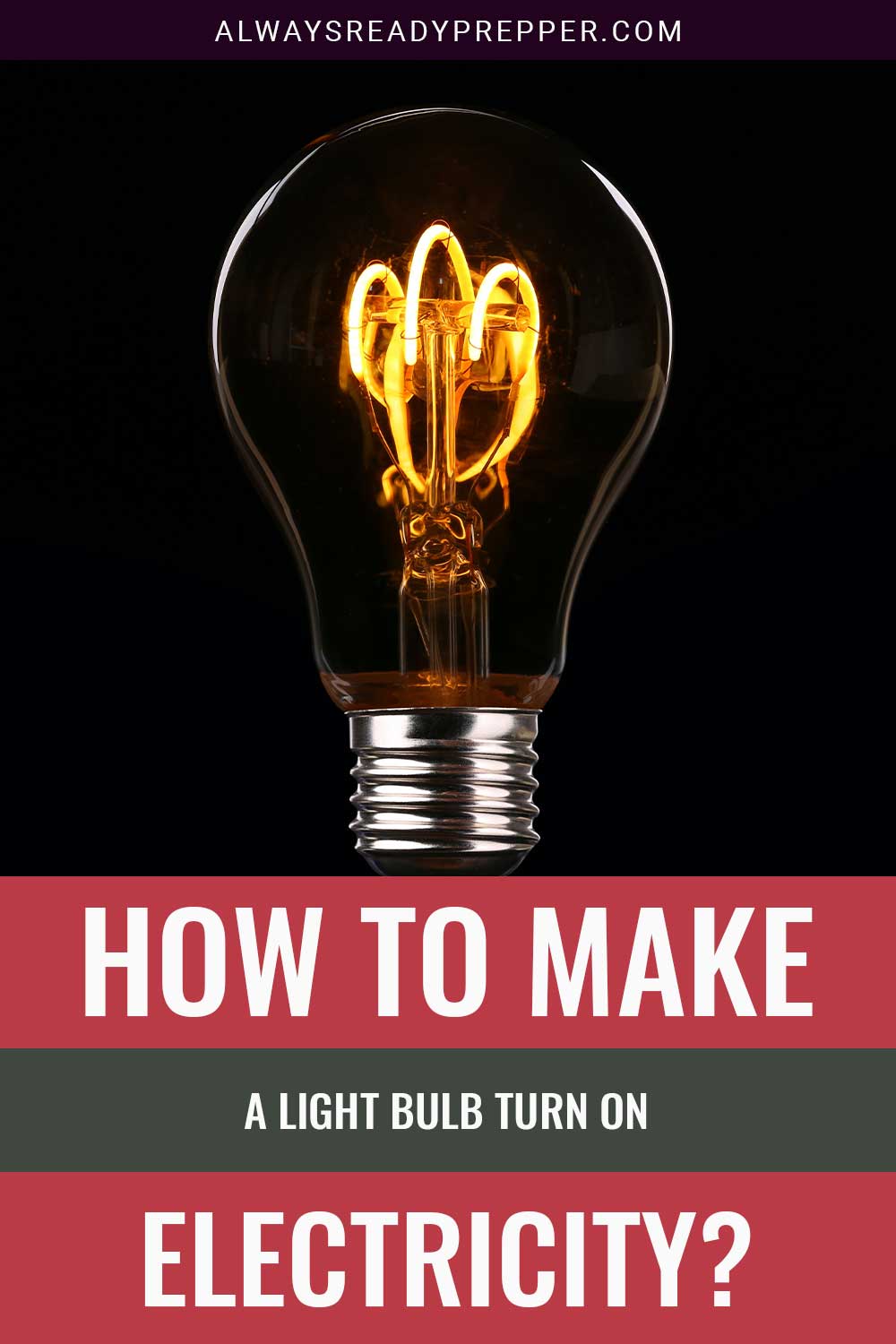How To Make A Light Bulb Turn On Without Electricity?
We may earn commissions for purchases made through links on our site. Learn more on our about us page.
Many different science projects and similar projects will show a person how to create an electric charge enough to illuminate a light bulb.
One of the more popular projects is using a potato, more like two good-sized potatoes, wired carefully together with screws in each to attach to the wiring.
Another is to have a small metal conductor with wiring around it, in tight coils with the wire coming free from both ends.
One end goes to the light bulb’s left prong, while on top of the magnet (circle shapes work best), and from that magnet to the other end of the wire will attach to the right prong.

What Can You Use Instead of Electricity?
The two examples provided above are just basic ways to power a lightbulb without needing an official source of electricity, such as an outlet or light switch. Another form of power can be used to power a lightbulb, including a pair of tomatoes, some wire, and a bulb.
Similar to the circuit created by the potato light bulb system, two tomatoes with a screw or nail to attach a wire to, along with wiring that is the exact same as the potato, this system is rather easy to set up and create light with.
Is it Possible to Turn on a Light Bulb with a Candle?
Depending on the type of candle being illuminated, electric or traditional wax and wick, this can be done rather easily.
Electric candles are normally saved for the holiday season, which can be fun to experiment with when decorating the home or become a staple for a dinner table.
Otherwise, the notion of turning on a light bulb with a wax and wick candle is ridiculous and cannot be reasonably achieved without the use of a light switch. If there is one present, feel free to give us a candle stick in place of a finger.
The Safest Alternatives for Electricity
There will be many different routes to electricity production, an alternative to the mainstream fossil fuel-driven sources.
The safest alternative to electricity concerning light and heat would be first to utilize glow sticks that only require a click to initiate a chemical reaction producing light, and the second would depend on the area or persons being warmed up.
In a home, a person can utilize a fireplace to warm an area; or when outside, use simple tricks beyond the basic winter clothing, such as hand warmers for fingers and toes.
How Can You Turn on a Light Bulb with a Battery?
There were a pair of examples provided above that used potatoes or tomatoes to generate enough charge to illuminate a lightbulb. The rigging that goes along with setting up a circuit using a battery in place of the fruit and vegetable goes much the same way.
Taking a small battery, and attaching a wire to the positive and negative side of a light base, will give a light bulb enough power to illuminate it. Even more, the battery will provide enough power for future light bulb usage.
Common Mistakes to Avoid
Do not electrocute yourself, and there is going to be a need for heightened levels of caution when conducting experiments due to the nature of electricity. No matter how low in power, creating electrical circuits will involve a certain level of risk.
The next most common mistake would be not wiring the circuit properly when making the magnet and other light bulb circuit systems. The conductive metal wrapped around the wire will need precise coiling for the system to work properly.
Another common issue that will arise is having a dead light bulb, which is one of the first steps in troubleshooting a circuit of this nature.
Final Thoughts on Making a Light Bulb turn on without Electricity
There are not many mistakes to be made, and no real risk of severe injury beyond burns. These science experiments aim to understand the energy needs of a simple circuit; the light bulb is the simplest indicator of a successfully built circuit.
The fascinating part about these circuits is the almost ‘out of nowhere nature in which the static charge is produced. Is there going to be a new way to produce energy in the near future, right in front of everyone’s face, as simple as plugging in two potatoes?



Leave a Reply
You must be logged in to post a comment.